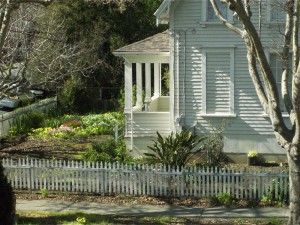A distinction that I’ve found provocative when thinking about moral decisions about eating is the three-way distinction between those decisions give priority to other human beings, those decisions that are most concerned with one’s own self, and those decisions that give priority to non-human beings. For example, one can distinguish between three types of strict vegetarians:
- Strict vegetarians who don’t eat meat and animal products because they are concerned that animal food products can use up to 16 pounds of grain per pound of animal, which could mean that raising animal products could take food out of the mouths of starving people;
- Strict vegetarians who don’t eat meat because they are concerned that meats may adversely affect their health;
- Strict vegetarians who don’t eat meat because they are concerned that raising and slaughtering animals for food leads to unnecessary pain and poor lives for the animals.
In reality, of course, many strict vegetarians use all three types of moral reasoning; but even so, usually one of these three types of moral reasoning generally will feel most important to any one person.
The first type of moral reasoning above is likely to be acceptable to nearly all religious liberals. Even though we will argue about the specifics, we commonly hold an ethical standard that we should act in such a way that we minimize harm to other people. Thus, if we all agreed that eating meat is really going to take food out of the mouths of starving people, causing them serious harm, we would generally agree that we should stop eating meat. (Of course, we don’t all agree that eating meat is going to harm others; the devil in moral reasoning is often in the details.)
The second type of moral reasoning above is least likely to be given much weight by religious liberals. While most of us would agree that it’s important to take care of oneself and to refrain from damaging oneself, nevertheless we are not particularly concerned with treating our body as a sort of holy temple; we’d place a much higher priority on making the world a better place for all persons. (I’d even say the reason many religious liberals take care of their health is to have more energy to make the world a better place for all.)
The third type of moral reasoning above remains under contention among religious liberals. While every religious liberal that I know feels that taking care of the entire ecosystem is a moral imperative, some religious liberals want to do this because we humans depend on the health of the ecosystem for our own health; that is, not harming the ecosystem is of secondary importance to not harming human beings — whereas other religious liberals want to take care of the ecosystem because they feel it is more important than human beings. (This latter position is sometimes referred to as Deep Ecology, or being “deep green” rather than merely “green.”)
If we let it, this conversation can take us to some interesting questions:— What’s most important in the universe: humanity, or something else? — and what do we name that something else? —God? —creation? (which begs the question, created by what or whom?) —earth? —the universe?
And those interesting questions, and others like them, can lead us to examine the roots of our theologies. Thus, one of the reasons I can’t call myself a humanist is that I can’t place utmost importance on human beings; I would call myself a Transcendentalist where my understanding of the universe tells me there’s something that transcends humanity, something before which I and all humanity must feel very small and insignificant; and this leads me towards some kind of Deep Ecology. By contrast, many of the liberal Christians I know are humanists; that is, even though they are committed to protecting God’s creation, they would consider human beings to be of utmost importance. (Here I’m using “humanist” in the broader sense of the word that goes back at least to Erasmus; I’m not using “humanist” in the new, reductive sense of the word that merely means “rejecting God”.)
From what I’ve seen, there’s an almost unresolvable difference between those who place humanity at the center of the universe, and those who place something else at the center of the universe. And in the latter group we can also find some unresolvable differences; there are those like me who place something hugely and transcendentally larger than humans (the ecosystem? God? Gaia?) at the center of universe; there are others who are more concrete and specific about what’s placed in the center of the universe (animals including perhaps human animals, etc.). All these nearly unresolvable differences help explain why our moral arguments about eating don’t often seem to get very far — we are often arguing from very different frames of reference.

